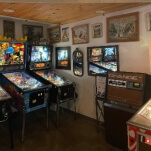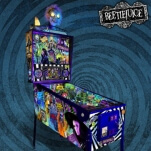Five Games to Play After Metroid Dread

I played through all four mainline Metroid titles leading up to Dread this past summer. What initially seemed like too much game for the allotted time ended up teaching me two important lessons. First off, you’re never really stuck. Usually the way forward is staring you in the face, just waiting for a stray blast or well placed bomb to reveal it. Secondly, these games aren’t all that long. A lot of their length in the ‘80s and ‘90s owed to having an unhelpful map or no map at all. But nothing else quite scratches that itch of moving forward to find a new ability that changes the way you move through the world, or doubles the number of locked doors you can open. Whatever I gained in picking up the homages and callbacks to previous Metroid games was coupled with the fear that this was the end of the line. Luckily, as it turns out, this world is full of game developers who played and learned those same lessons I did. Here are some more games that capture that Metroid feel.
Bloodstained: Ritual of the Night

Castelvania was my entry point to this particular videogame subgenre; in fact, Castlevania as a series is so closely tied to this kind of game that the style is commonly called by the awkward portmanteau “metroidvania.” Symphony of the Night and Aria of Sorrow were objects of childhood obsession for entire summer vacations in a time before I could reliably get my hands on a computer with an internet connection. Being stuck for a week until I could check Gamefaqs again sucked, but these are problems of a bygone age. Bloodstained: Ritual of the Night is a love letter to those objects of obsession. Made in part by Koji Igurashi, the game is indebted to his earlier work in the Castlevania series. You work your way through an interconnected castle, hoping each slayed enemy drops their unique ability for you to use. Half the fun is learning the space, and the other is learning which weapons and ability kit work best for you. It’s pretty much a copy and paste job of those old games minus Dracula, but speaking as someone who loved most of those handheld Castlevanias, there’s nothing wrong with that.
Hollow Knight
Australian developer Team Cherry really stepped in it with this one, by making a game many consider a modern classic—so much so that every major videogame press event bears the not-so-silent hope that its follow up Hollow Knight: Silksong will be among the announcements. Hollow Knight arguably owes as much to Dark Souls as it does to Metroid and its kin, but fans of both will find something worthwhile. As a little skull guy, you use your tiny sword to cut your way through a ruined bug kingdom. The map is sprawling, the bosses demand precise pattern recognition and bits of lore are hidden around the world to find. The handful of characters you cross paths with are all exceptionally defined. Some are funny, some are mournful, a handful will make you audibly cheer when they show up at the last minute. Despite the scant dialogue, the game’s length still makes room for a couple of truly affecting moments that have stuck with me years after finishing the game.










































